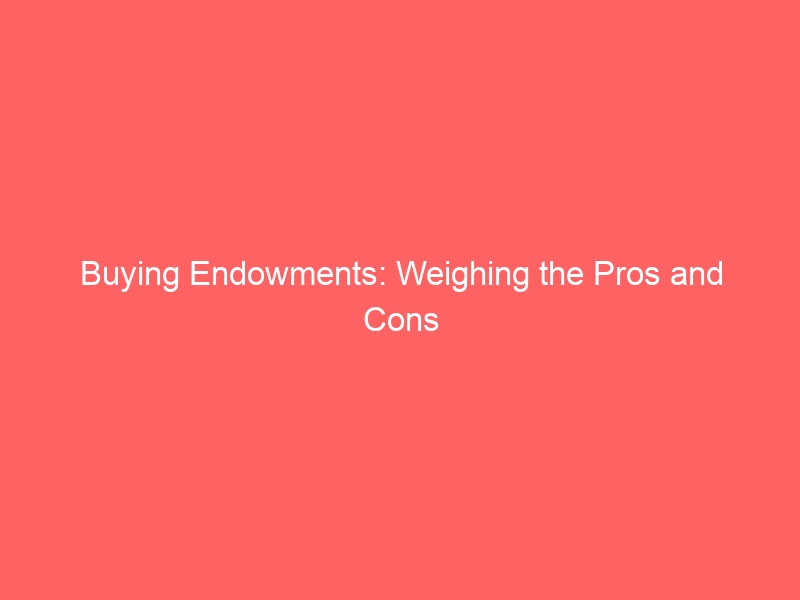Buying Endowments: Weighing the Pros and Cons
When it comes to financial planning, endowments often come up as a topic of interest. Buying endowments can be a strategic move for some investors, but it’s not without its drawbacks. In this post, we’ll explore the advantages and disadvantages of investing in endowments.
Pros of Buying Endowments
1. Long-Term Savings Plan: Endowments are typically structured as long-term savings plans, which can be beneficial for goals like retirement or funding a child’s education⁵.
2. Tax Efficiency: Depending on your tax bracket, endowments might offer a more tax-efficient way to invest compared to other options, especially if your marginal income tax rate is higher than 30%.
3. Estate Planning: Under certain circumstances, endowments can serve as useful tools for estate planning, potentially offering a way to manage inheritance taxes and provide for beneficiaries.
Cons of Buying Endowments
1. Liquidity Concerns: One of the main drawbacks of endowments is the lack of liquidity. Funds are often locked in for a term of five years or more, with only partial access to your money during this period.
2. Costs and Fees: Endowments can come with various costs and fees, including management fees and penalties for early withdrawal, which can eat into your returns.
3. Investment Risk: Like any investment, endowments carry a degree of risk. The return on the investment portion of your endowment may vary, and there’s no guarantee of a profit.
How do I choose the right endowment plan for me?
Choosing the right endowment plan involves several steps to ensure it aligns with your financial goals and circumstances. Here’s a guide to help you make an informed decision:
1. Financial Goals Alignment: Identify your long-term financial objectives. Are you saving for retirement, your child’s education, or a major purchase? Select an endowment plan that matches these goals.
2. Policy Term and Maturity: Consider the policy term that aligns with your financial timeline. If you’re planning for an event 15 years from now, a 15 to 20-year endowment plan would be appropriate.
3. Premium Payment Terms: Decide on a premium payment schedule that fits your income. You can opt for regular premium payments or a single premium option if you have irregular income.
4. Guaranteed vs. Non-Guaranteed Returns: Understand the maturity benefits of the plan. How much is guaranteed, and how much depends on the fund’s performance? This will help you gauge the potential returns.
5. Capital Guaranteed: Check if the plan guarantees the return of your capital. This can provide peace of mind that you won’t lose your initial investment.
6. Liquidity and Flexibility: Assess the plan’s liquidity. Can you withdraw funds during the term, and if so, are there penalties? Flexibility can be important if your financial situation changes.
7. Insurance Coverage: Evaluate the life insurance coverage provided by the endowment plan. Ensure it meets your needs and provides adequate protection.
By carefully considering these factors, you can choose an endowment plan that best suits your financial situation and helps you achieve your future aspirations. It’s also wise to consult with a financial advisor to get personalized advice based on your specific needs and goals.
Conclusion
Buying endowments can be a smart financial move for some, but it’s important to consider your personal financial situation and goals. Understanding both the pros and cons is crucial before making any investment decisions. If you’re considering an endowment, consult with a financial advisor to see if it aligns with your long-term financial strategy.

